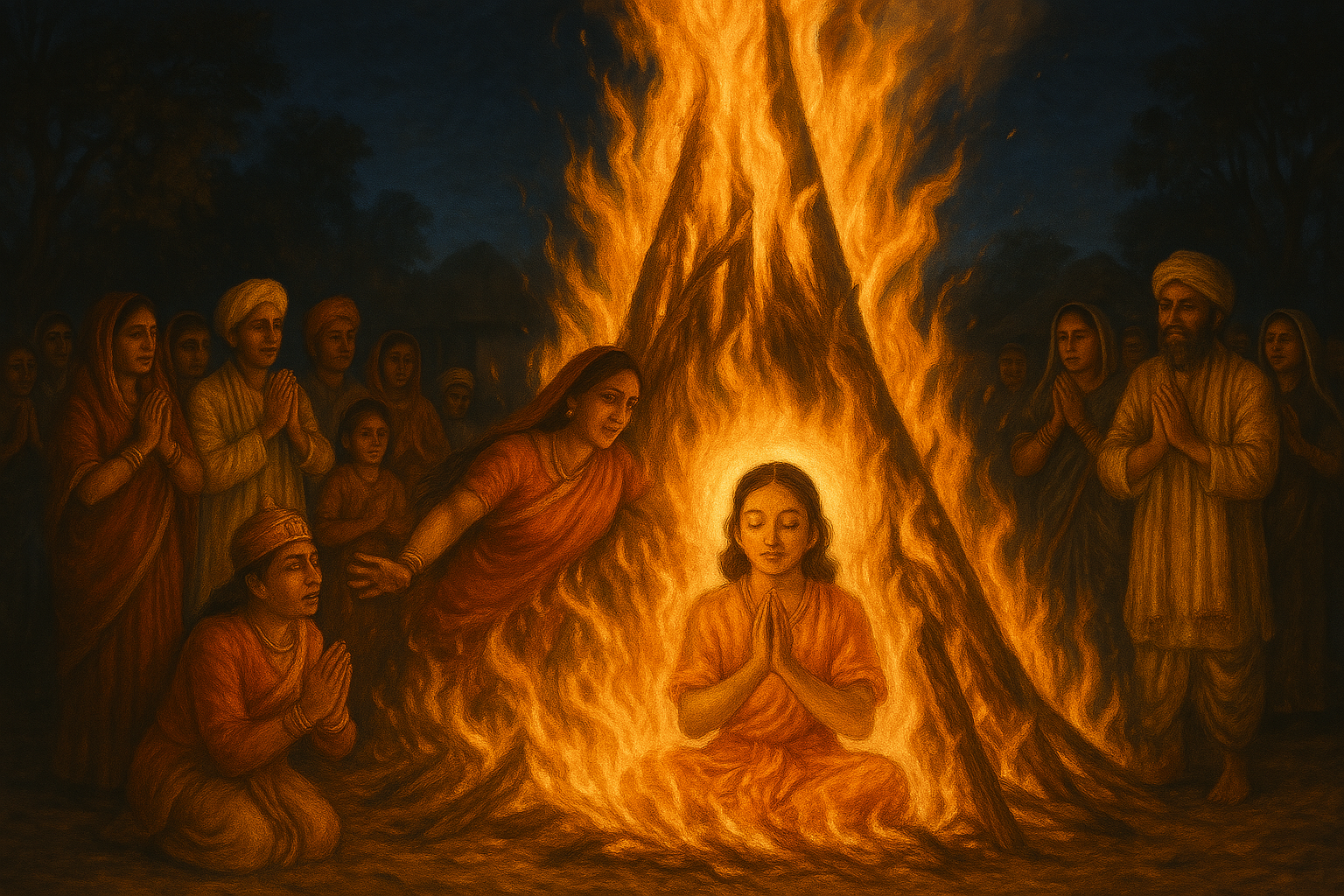
The Story Behind Holi – Victory of Devotion Over Evil
Holi, the vibrant and joyful “Festival of Colors,” is one of the most awaited festivals in the Hindu calendar. While it is celebrated with colors, music, sweets, and playful traditions, the spiritual core of Holi tells a deep and powerful story — the triumph of devotion and righteousness over arrogance and evil.
This story is centered around a divine child, Prahlad, and his unwavering faith in Lord Vishnu in the face of terror brought upon by his own father, the demon king Hiranyakashipu. It is this ancient story that gives Holi its significance and soul.
Hiranyakashipu – The Tyrant King
The story of Holi begins with Hiranyakashipu, a powerful demon king who desired absolute control over the universe. After performing intense penance, he was granted a boon by Lord Brahma that made him nearly invincible — he could not be killed by man or beast, day or night, indoors or outdoors, on land or in the sky, or by any weapon. Drunk on power, he declared himself God and demanded that all his subjects worship him alone.
However, to his disappointment and fury, his own son Prahlad refused to worship him. From a young age, Prahlad was deeply devoted to Lord Vishnu, the divine preserver of the universe. Despite being born into a demonic lineage, Prahlad was a child of pure faith and unwavering bhakti (devotion). This angered Hiranyakashipu, who could not tolerate his son's love for Vishnu.
Prahlad – The Child Devotee
Prahlad’s devotion became a beacon of divine truth in the dark palace of Hiranyakashipu. The more the king tried to frighten and punish him, the more Prahlad chanted the name of Vishnu. The king's efforts to sway his son’s mind through persuasion, threats, and torture failed miserably.
When Hiranyakashipu saw that nothing worked, he decided to kill Prahlad once and for all.
The Fiery Plot – Holika Dahan
To execute his cruel plan, Hiranyakashipu turned to his sister Holika. She had a boon that made her immune to fire — she could enter a blaze and emerge unscathed. The king ordered her to sit in a burning fire with Prahlad in her lap, expecting the flames to consume the boy while she remained untouched.
But what happened next became the foundation of Holi’s true meaning.
As Holika sat in the fire with Prahlad, something miraculous occurred. Protected by his unshakable faith in Vishnu, Prahlad remained unharmed while Holika burned to ashes. Her powers failed her because she used them with malicious intent, while Prahlad’s devotion shielded him with divine grace.
This event is celebrated on the eve of Holi as Holika Dahan, where people gather around large bonfires, symbolizing the burning of evil and the victory of devotion and righteousness.
The Divine Justice – Narasimha Avatar
After Holika’s failure, Hiranyakashipu became even more enraged. One day, in a fit of fury, he asked Prahlad mockingly, “Where is your Vishnu now? Is He in this pillar?” Prahlad calmly replied, “He is everywhere.”
At that moment, Lord Vishnu emerged from the pillar in the form of Narasimha, a half-man, half-lion avatar — neither human nor animal. At twilight (neither day nor night), Narasimha pulled the demon king to the threshold of a courtyard (neither indoors nor outdoors), placed him on his lap (neither land nor sky), and tore him apart with his claws (not a weapon).
In doing so, every aspect of Brahma’s boon was bypassed, and justice was delivered. Righteousness triumphed, and the world was once again in balance.
The Colorful Celebration of Life
The day following Holika Dahan is celebrated with joy, colors, and music. Known simply as Holi, it is a time when people forget enmities, forgive, and renew their bonds. The colors represent the diverse emotions of life, unity in diversity, and the spirit of celebration after the defeat of darkness.
Children throw water balloons and apply gulal (colored powders) to one another, symbolizing the blooming of spring and the joy of victory. It is also a time of community and equality, when social barriers fall away and all dance together.
The Spiritual Significance
While modern Holi is fun-filled and festive, its roots lie in profound spiritual wisdom. Prahlad’s story teaches us that:
-
True faith knows no fear.
-
Evil, no matter how powerful, cannot stand before pure devotion.
-
Divine protection comes to those who walk the path of truth.
In our lives too, Holika represents the arrogance, negativity, and ego we must burn, while Prahlad represents the divine child within us that seeks love, truth, and connection with the Divine.
Conclusion
Holi is not just a celebration of colors but a reminder of an eternal truth — that devotion, truth, and righteousness always triumph, even in the face of overwhelming darkness. The flames of Holika Dahan are symbolic of our own inner cleansing, a chance to let go of ego, hatred, and falsehood, and emerge renewed with joy and light.
As we apply vibrant colors on our friends and family, let us also color our hearts with love, forgiveness, and devotion — just as Prahlad did.
